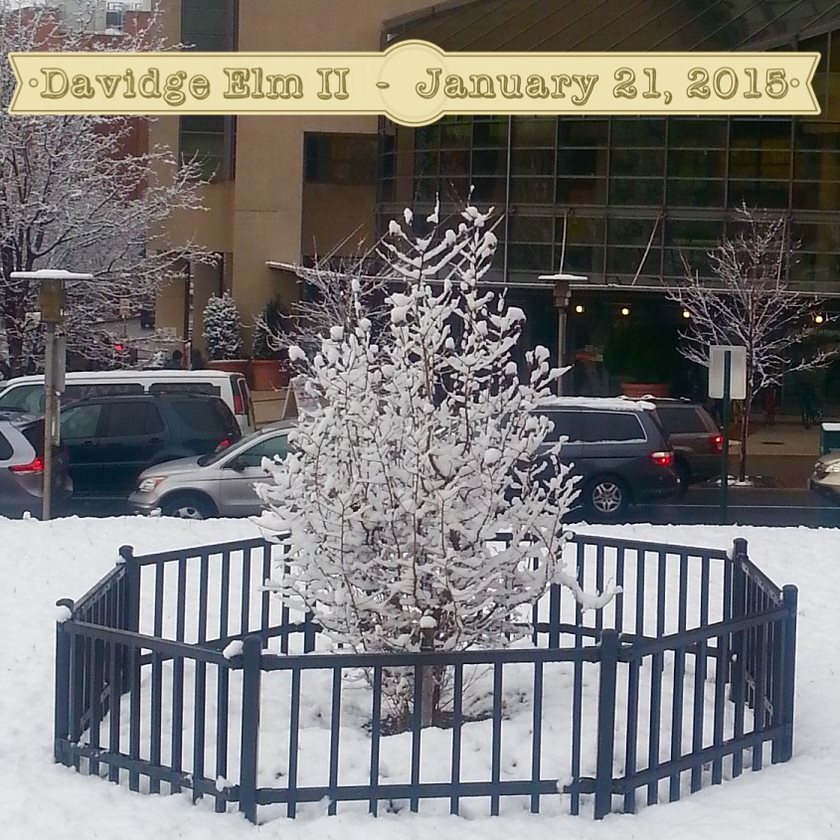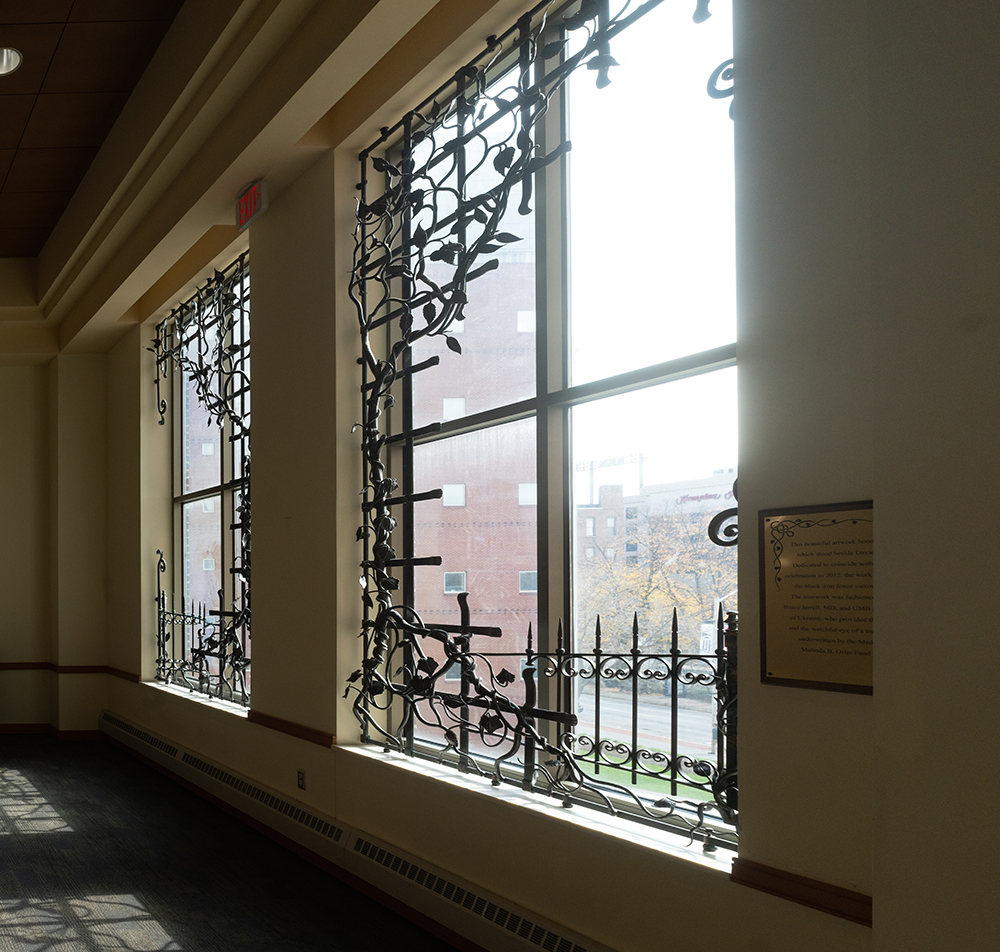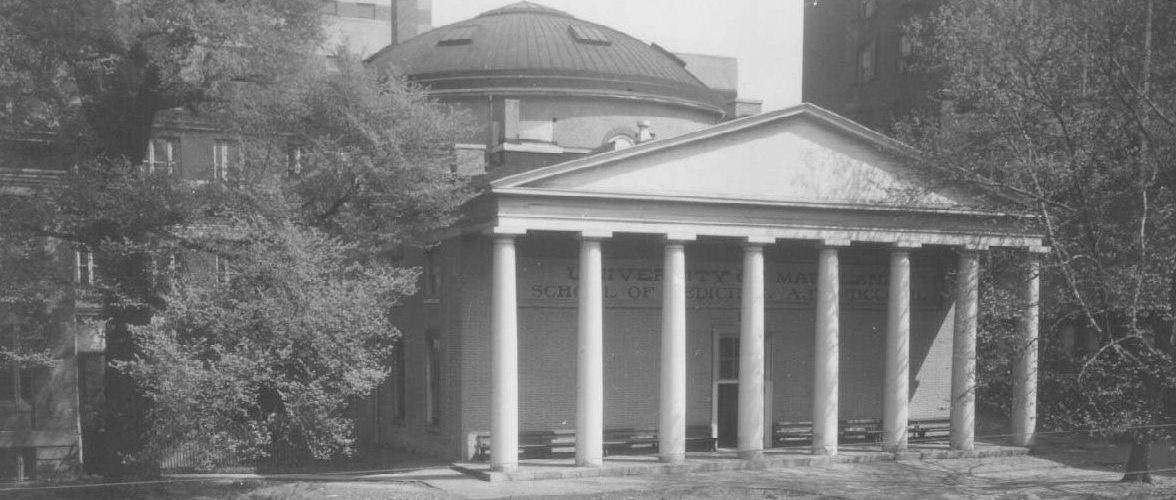For nearly 200 years, an elm tree stood at the corner of Lombard and Greene streets in Baltimore, serving as the historic symbol of the University of Maryland, Baltimore (UMB). The tree was situated on the front lawn of Davidge Hall and dated to approximately 1807, when the School of Medicine was founded.
Surviving the Civil War, the Great Depression, and civil unrest in the late 1960s, the tree has represented the strong roots of the University in the greater community. UMB has advanced important medical discoveries with one of the nation’s oldest medical schools, established the world’s first school of dentistry, operated one of the oldest law schools and pharmacy schools in the country, and helped shape the profession of nursing.
The tradition continues even after the original tree died of age and disease and was removed in 2001. Marking the 200th anniversary of Davidge Hall in 2012, a surviving seedling taken from the original elm was donated by Richard Taylor, MD ’75, and now stands in the same spot on the lawn of historic Davidge Hall.
Over the years, the elm tree has endured as the symbol of UMB, representing the embodiment of our impact on the Baltimore community and elsewhere in the world. As recently as 2019, when the University broke ground for its new Community Engagement Center (CEC) at 16 S. Poppleton St., the elm was at the forefront of the ceremony. Community members hung paper leaves on a metal elm tree sculpted by President Bruce E. Jarrell, MD, FACS, an accomplished blacksmith. On each leaf, attendees were asked to finish the phrase: “I will grow in the CEC when I …”
At the Southern Management Corporation Campus Center, a large iron sculpture depicting the original elm tree adorns two picture windows on the second floor. The sculpture, unveiled in 2012, was created by Jarrell and Ukrainian master blacksmith Anatoliy Rudik. Iron from the original fence that surrounded Davidge Hall was used in the sculpture. In addition, a ballroom there is now named the Elm Ballroom.
The University also honored the tree by naming its weekly newsletter Elm Weekly and community-driven website The Elm. And UMB’s elm tree tradition will continue to grow as the University seeks to incorporate the symbol in future projects.

For nearly 200 years, an elm tree stood at the corner of Lombard and Greene streets in Baltimore on the lawn of Davidge Hall. The tree, shown here in the 1940s, was removed in 2001 after dying of age and disease. 
UMB President Bruce E. Jarrell teamed with Ukrainian master blacksmith Anatoliy Rudik to make the iron sculpture of the elm, with iron from the original Davidge Hall fence, at the Southern Management Corporation Campus Center. 
The elm tree, pictured in the 1960s, has represented the strong roots of the University in the greater community. 
The new tree, taken from a seedling that survived from the original elm, was donated by Richard Taylor, MD ’75. 
The original elm tree, pictured in 1901, was believed to have dated to approximately 1807, when the School of Medicine was founded. 
A surviving seedling taken from the original elm was planted in the same spot on the lawn of Davidge Hall in 2012. 
Iron from the original Davidge Hall fence was used to make the elm sculpture at the Southern Management Corporation Campus Center. 
The elm sculpture by UMB President Bruce E. Jarrell and Ukrainian master blacksmith Anatoliy Rudik adorns two tall picture windows on the second floor of the Southern Management Corporation Campus Center.




